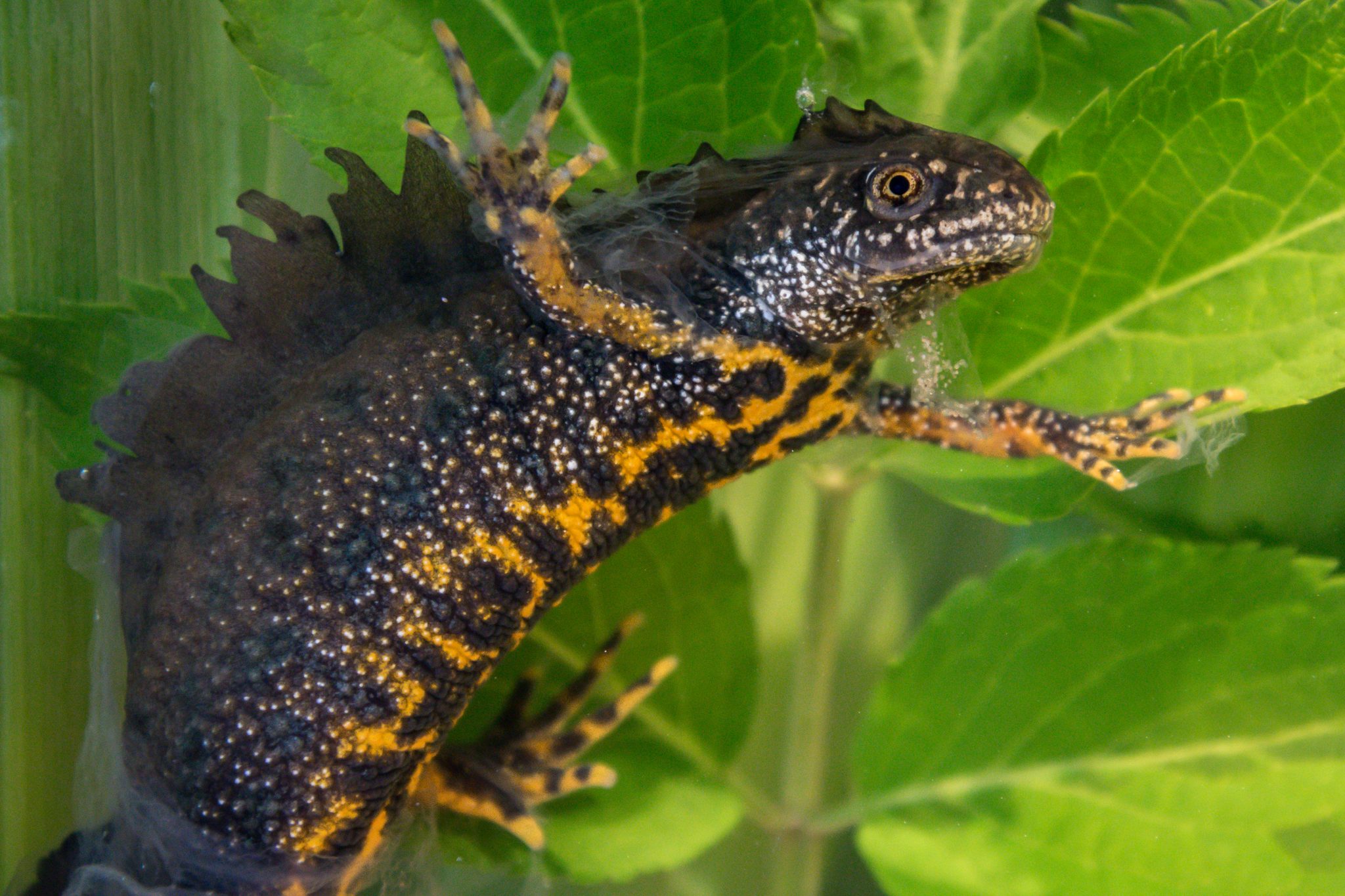Andrew Buxton has published a paper in the journal PLOS ONE entitled Is the detection of aquatic environmental DNA influenced by substrate type?, co-authored by Professors Jim Groombridge and Richard Griffiths. Andrew has observed how the chance of detecting environmental DNA reduces over time after the species shedding the DNA (Great Crested Newts in this case) are removed from the pond.
The paper also looks at how different pond sediment influences the change in detection rate, finding that the chance of detecting eDNA reduces faster in ponds with more organic matter (topsoil in this experiment) than for ponds with sand or the control which was just plastic. Andrew and his research team also found that the chance of detecting eDNA from samples with a clay substrate reduced slightly faster than sand than the control group, but not to the extent topsoil did.
eDNA and Great Crested Newts are very topical at the moment with the method of detection being used commercially for protected species’ surveys influencing the planning system in the UK, and this work, along with other work that DICE has undertaken, is adding to the growing evidence-base evaluating this method.
The paper is open access and can be read here.
Abstract
The use of environmental DNA (eDNA) to assess the presence-absence of rare, cryptic or invasive species is hindered by a poor understanding of the factors that can remove DNA from the system. In aquatic systems, eDNA can be transported out either horizontally in water flows or vertically by incorporation into the sediment. Equally, eDNA may be broken down by various biotic and abiotic processes if the target organism leaves the system. We use occupancy modelling and a replicated mesocosm experiment to examine how detection probability of eDNA changes once the target species is no longer present. We hypothesise that detection probability falls faster with a sediment which has a large number of DNA binding sites such as topsoil or clay, over lower DNA binding capacity substrates such as sand. Water removed from ponds containing the target species (the great crested newt) initially showed high detection probabilities, but these fell to between 40% and 60% over the first 10 days and to between 10% and 22% by day 15: eDNA remained detectable at very low levels until day 22. Very little difference in detection was observed between the control group (no substrate) and the sand substrate. A small reduction in detection probability was observed between the control and clay substrates, but this was not significant. However, a highly significant reduction in detection probability was observed with a topsoil substrate. This result is likely to have stemmed from increased levels of PCR inhibition, suggesting that incorporation of DNA into the sentiment is of only limited importance. Surveys of aquatic species using eDNA clearly need to take account of substrate type as well as other environmental factors when collecting samples, analysing data and interpreting the results.
Photograph by Danni Thompson.

